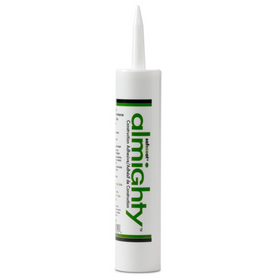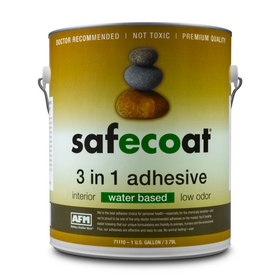
Productive Architecture: A Paradigm Shift for Our Homes
Last Updated: Apr 13, 2025Are you ready for some bad news? The Amazon rainforest, which is widely considered to be the lung of the world, has been on fire for weeks. It is burning at the rate of one and a half soccer fields every minute of every day. Every hour, around 1,692 acres of productive dry land and savannah is turning into desert. To date, we have lost over one-fourth of our coral reefs, and the remaining reef ecosystems could cease to exist altogether in the next three decades. The scope of the environmental destruction caused by our current civilization is becoming ever more apparent. The sheer scale of this ecological ruin is shifting how we talk about how we can live in a more responsible and balanced manner.
Table of Contents
- What is Productive Architecture?
- Examples of Integrating Productive Architecture into Your Home

While interest in sustainable development and livelihoods (including sustainable architecture) has been growing, many experts recommend that we need to move beyond sustainability and search for ways to create regenerative ways of living. Today, we hear people talk about the need for restoration, renewal, return, repair, regeneration, re-wilding, and resurgence.
The focus on regenerative ways of living encourages people to adopt livelihoods that actively help or allow the world to recover (another "re" word) from the damage we have inflicted. In terms of architecture, the homes we live in can also move beyond small "green" improvements and actively participate in helping the natural world to heal from the myriad of ecological crises. Productive architecture is a current architectural philosophy that seeks to design buildings that can have a positive impact on the surrounding natural landscape. That's good news.

What is Productive Architecture?
According to the architectural firm Kiss + Cathcart, productive architecture "means buildings that produce positive benefits on every level—human, environmental, and economic. In human terms, this means places that promote health, happiness, and inspiration; in environmental terms, producing a surplus of renewable energy, using no groundwater, and generating no waste; in economic terms, creating real value; in architectural terms: a prerequisite to good design."
Productive architecture, then, is a building design strategy that seeks to go beyond "green and sustainable" upgrades to a home to allow the house to have a positive impact on the environment. Instead of merely "limiting" the footprint or environmental impact of a home, productive architecture imagines dwelling places that aggressively improve the ecological resiliency of a place.
In a 2013 TED talk, Columbia University architecture professor Dong-Ping Wong talked about how the 2008 economic recession allowed homeowners, architects, and builders to reimagine the role of built spaces. In the TED talk, he asked: "can we make architecture that actually makes good things…like clean water, clean air, and food?"
Wong went on to mention several productive architectural designs that he and his team had collaborated on, searching for ways in which the built environment could contribute to a healthier ecosystem.
For example, in Copenhagen, Denmark, Wong worked on designing an urban neighborhood that seeks to allow buildings to maximize the sustainable production of food. Urban sprawl often causes the devastation of surrounding rural farmland and agrarian communities. Wong believes that a productive architectural approach would allow the buildings to contribute to maximized, sustainable food production. The project sought to "take the productive qualities of farmland or agrarian area and combine it with all of the efficiencies of a city and urban density." Specifically, the buildings were organized and spaced to protect the productive areas, including fields, vegetable gardens, fruit orchards, a local farmer's market, and a water treatment plant. The pastoral landscape was allowed to continue to thrive within a metropolitan way of living through the careful design of the built environment.
Building Materials
Shop high-performance building materials that are vetted for benefits to your health, your pocketbook, and the planet.

AFM Safecoat Almighty Adhesive Case of 12
AFM Safecoat
In Stock

AFM Safecoat 3 in 1 Adhesive
AFM Safecoat
In Stock

Quickscrews Cabinet Install Screws
Quickscrews
In Stock

AFM Safecoat Metalcoat Primer
AFM Safecoat
In Stock

AutoSlide Automatic Sliding Door System
Autoslide
Out of Stock
2 Colors

Autoslide Smart Tag Pet Door Kit
Autoslide
Out of Stock
2 Colors

AutoSlide Elite iLock Smart Tag Pet Door System
Autoslide
Out of Stock
2 Colors

Quickscrews Pan Head Pocket Hole Screws
Quickscrews
In Stock

Autoslide Elite Smart Tag Pet Door Kit
Autoslide
Out of Stock
2 Colors

Autoslide Motion Activated Pet Door System
Autoslide
Out of Stock
2 Colors

Another example of productive architecture that Wong and his team worked on was a floating pool in the Hudson River in downtown New York City. The project, called Plus Pool, is currently being designed as a piece of public infrastructure that would allow the residents of New York City to once again enjoy swimming in the Hudson River. (Due to high amounts of contamination, swimming in the Hudson has been banned for several decades.) Wong's team sought to design a floating pool that would work as a giant filter dropped in the river. The several layers of filtration would remove bacteria, contaminants, and odors, leaving only safe, swimmable water that meets or exceeds local and state standards. While chlorine is exceptionally effective at killing bacteria, it also kills the remaining fish and other aquatic life in the river. This unique example of productive architecture would offer a natural way to clean the river while also allowing people a chance to enjoy the river that runs through downtown Manhattan.
Examples of Integrating Productive Architecture into Your Home
Whether you live in a high rise apartment in New York or on a rural homestead in the Midwest, you can integrate productive agriculture into your home design. Below we offer a few design ideas and strategies for making your home as productive and regenerative as possible:
1. Limit Demand for Raw Materials
While every building will require materials to be constructed, limiting the demand for raw materials is essential. Opting for a smaller home will not only decrease your need for energy. It will also mean that less lumber and other common building materials will be required. Moreover, searching for ways to integrate recycled or salvaged materials into your home is another way to reduce your embodied energy footprint.
2. Reimagine Waste Streams
One of the most significant sources of environmental contamination from the built environment is the sources of waste and contamination that flow from our homes. For example, the rain falling on our roof and driveway often end up as stormwater contaminating local watersheds. The greywater and blackwater from our homes is another potential source of environmental contamination, especially for people who live in areas with an already stressed municipal sewer system. The trash that we put out onto the curb every week might be contributing to enormous amounts of methane gas emissions at our local landfill.
Productive architectural solutions seek to eliminate those waste streams through finding productive and regenerative ways to reuse those resources on the lands immediately surrounding our home. A simple worm composting bin can reduce kitchen waste (and the subsequent methane emissions at landfills). At the same time, it creates fertile soil for increased carbon sequestration in our yards. A series of swales and can help to reduce erosion and stormwater contamination while improving soil quality and replenishing local aquifers. Graywater recycling systems or micro-wetlands can use "waste" water from our sinks and showers to drastically increase biodiversity around our homes. Our recent series on permaculture design principles also offers an abundance of ideas and inspiration for improving the ecological resilience of our homes' sites.
3. Limit Energy Demand
Productive architecture solutions also ask homeowners to reduce the total energy demand our homes require. Passive house principles offer insight into how our homes can not only transition to renewable sources of energy (and thus reduce their carbon footprint) but also require less energy. Homes can become net-zero energy through remodeling, like this 100-year old Victorian home in Minneapolis, Minnesota.
We are living in a transformative time. Like the net-zero energy Hanson home in St. Paul, Minnesota demonstrated, homes can be of service to our community. We at Rise are hoping to help this transformation along, for the greater good!
Tobias Roberts
Tobias runs an agroecology farm and a natural building collective in the mountains of El Salvador. He specializes in earthen construction methods and uses permaculture design methods to integrate structures into the sustainability of the landscape.
